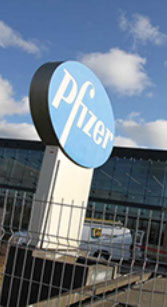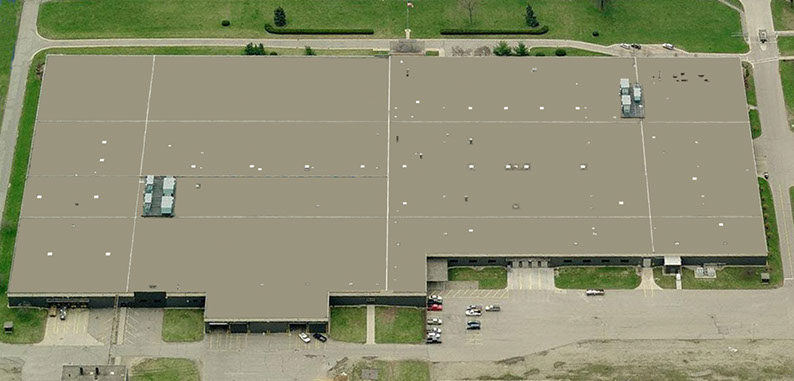

PROJECT SOLUTIONS:
> Extensive communication and
coordination to establish needed
interface
> Used explicit notes, sketches and
details to accommodate
evaluation and design
PROJECT SERVICES:
> Evaluation
> Design Development
> Construction Documents
> Bidding
> Field Quality Assurance
PROJECT MARKET:
> Corporate
> Pharmaceutical
STRUCTURETEC RESTORES BUILDING ENVELOPE FOR PFIZER, INC.
Pfizer, Inc., the world's leading research-based pharmaceutical company which provides a broad range of human and animal pharmaceuticals and consumer products, was experiencing leakage concerns at Building 259 in Kalamazoo, Michigan. Building 259, a research and development facility, was constructed around 1982 primarily of brick masonry and was a part of the Pfizer acquisition of Pharmacia Corporation. StructureTec was contracted to evaluate the entire building envelope, as well as particular leakage concerns occurring at the basement level of the structure.
Several unique challenges were encountered with this project, the first regarding security clearance for access into the facility. Through extensive communication and coordination, StructureTec established a high level of interface that allowed StructureTec and miscellaneous trades access when it was needed. The next challenge StructureTec faced was the fact that cameras were not allowed on site. StructureTec overcame this challenge by taking explicit notes, sketches, and details to accommodate the evaluation process.
Although the walls appeared to be in relatively sound condition, each wall elevation typically contained varying amounts of distress or degradation to the masonry. There were areas where the embedded steel had caused movement in the wall. The concrete foundational walls were exhibiting physical cracks and distress, with hairline cracks present, both along and between control joints. Previous repair efforts had been unsuccessful at achieving watertight integrity. The major area of concern, however, was at the joint interface between the masonry brick and the concrete foundation wall.
The original flashing system had been trimmed flush with the wall, leaving an open void. This opening was a major passageway for moisture infiltration into the basement of the building. Also, through-wall flashings were not present above wall penetrations such as doors and windows. In many locations, the steel lintels above these areas exhibited degradation and rust. Other minor problems were discovered with windows, below-grade waterproofing, limestone, copings, etc.
StructureTec then took the extensive findings from the evaluation and designed possible solutions for remediation. This posed another challenge for StructureTec because extensive detailing was required to incorporate the repair of so many components: windows, walls, expansion joints, control joints, below-grade construction, through-wall counterflashings, masonry, sealants, copings, etc. StructureTec then incorporated these designs into specifications which were bid by approved contractors.
During the construction phase, all areas of deficient masonry and limestone were replaced, new silicone sealant was applied at all joints, and new sealer was applied to all masonry surfaces. StructureTec also recommended providing new through-wall flashings. It is intended that this work will be performed as a second phase to the project. The water-repellent barrier created by the sealer will solve Pfizer's leakage concerns. This process will be maintained every 10-15 years. In conclusion, Pfizer was able to correct the water ingress into their building, while staying within the allotted budget. This process assured Pfizer the greatest return on investment.
WHAT WE DO
StructureTec is a building envelope, pavement, and roof consultant specializing in the waterproofing and restoration of existing building envelopes, roofs, pavement and concrete structures.
"We provide the best solutions"

